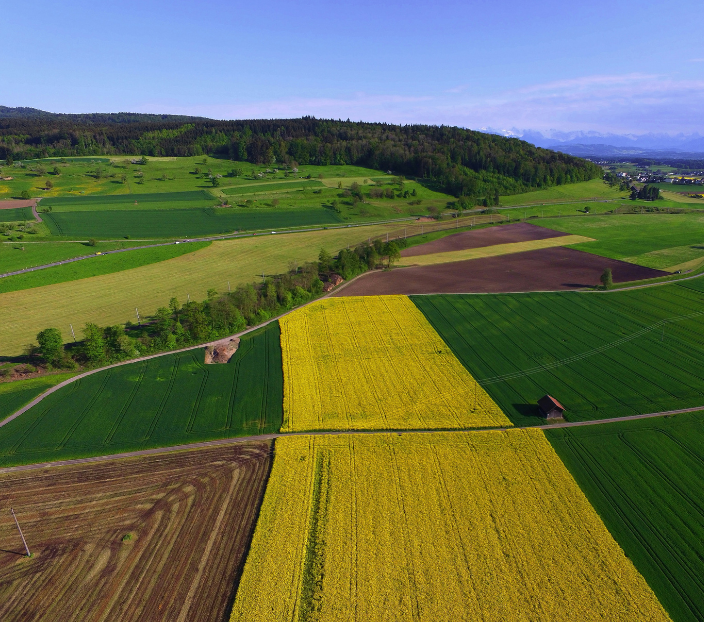
September 2023
The role of climate tech and innovation in carbon markets
Climate tech solutions are entering the market to help us reach climate targets with ever-more urgent timelines. Through satellite imaging, modelling or digitizing workflows, technology can improve the accuracy of monitoring activities, the efficiency of verification processes or help better understand a project’s chances of success. And while these solutions hold great promise for scaling and speeding up credible climate action, technology alone is not a silver bullet. It won’t help much if it’s used in isolation, without the right application and process.
In the latest episode of our How to Net Zero podcast, SustainCERT CEO Marion Verles sat down with Rebekah Braswell, CEO of technology-driven reforestation company Land Life Company, and Oliver Bolton, CEO of science-backed project marketplace and certification company Earthly, to discuss if and how climate tech can help scale carbon markets with integrity.
Climate tech can accelerate new climate solutions – but how it’s done matters
For Rebekah, climate tech is a key accelerator for land regeneration at scale. At Land Life, technology is used through the entire process, from design to implementation and monitoring to support their ambitious goal: regenerating all of the world’s degraded land area. And with a land mass of 2 billion hectares, or the size of US and China combined, this is no small feat.
“In the design phase, climate tech helps us simulate the planting process so that we emulate natural processes as much as possible. Planting trees can go south for multiple reasons. Our remote sensing dashboard allows us to assess the restoration potential of an area before even heading to the field, which can save a lot of time,” she explains. “We also run our impact model 200 times to figure out the optimal planting design. Tech can help us understand how to do things in the best way and execute projects at scale.”
The continuous flow of information enabled by technology helps Land Life ensure their projects are creating the environmental impact they hoped for. “We have invested extensively in hardware to germinate our seedlings and to take care of them after planting. We also use an app to monitor how our geotagged trees are doing, improving our understanding of what is happening on the ground. This is especially useful for newly planted areas, as other methods like satellite data cannot capture information for young trees.”
At Earthly, technology is leveraged to assess the quality of nature-based projects. Their tool uses a huge data stack to screen any project, looking at 106 indicators on carbon, biodiversity and people. For Oliver, not all nature-based projects are created equal, and quality often varies from one project to another. Having an automated and consistent way to screen projects can help identify which investments will have surviving impact. “We also identify gaps and opportunities that project developers can improve on. We want to build trust and move the bar higher across project development, rather than just point out flaws.”
How to ensure tech enhances trust and credibility in the market?
To create a race to the top in terms of project quality, climate tech needs to be robust and credible. Marion argues that tech companies need to remain humble and incorporate a mindset of continuous learning, as every new solution has its benefits as well as its limitations. Implementing safeguards and common rules and requirements is integral to ensuring the quality of carbon credits goes up rather than down as we scale up new technology.
Oliver says Earthly has always wanted to build trust in the market. “It has been a challenge to give companies confidence to invest in nature, while worries of greenwashing abound.” However, he thinks climate tech can be a catalyst towards quality and integrity in the carbon and nature-based solutions market. “There’s a big appetite from project developers to try out new technologies and innovative Monitoring, Reporting and Verification (MRV) solutions. Science should always be leading the way so that we can identify applicable solutions and use AI in the best way possible to improve the accuracy of our data.”
Rebekah agrees that technology has to go hand in hand with science. “At Land Life, we work closely with a scientific board of university representatives, who provide pretty brutal feedback on our work on a regular basis. This is how we can get better.”
While climate tech has a key role in enabling nature-based projects, there are also issues it can’t solve. “Engaging with people on the ground, creating nurseries that can manage seedlings at scale, and land access agreements are all examples of issues we need to work on outside of technology,” Rebekah explains.
Verification will remain important – and it needs to adjust to digital approaches
Third-party verification is always going to be needed for credible project accounting and it needs to better integrate with new climate tech.
“From a funder perspective, it’s hard to know who to trust and which platform will do the best job at rating options,” Rebekah points out. “Third party verification is necessary to ensure our projects are meeting quality standards. The challenge is that it’s often slow and there’s not enough auditors, creating a huge backlog of projects waiting to be verified. I hope that data and tech can play a bigger role in third party verification, for example using satellite and remote sensing data to reduce the work that goes into auditors covering huge areas by foot. There is also still room for tech itself to improve – we aim to create continuous improvement from one planting season to the next.”
The market is playing catch up to accommodate digital solutions
Rebekah and Oliver share their experience on pioneering new technology in a market that was not always ready for their solutions. “When starting Land Life, there was little climate tech let alone nature tech out there. We had to do a lot of market education, and spend time learning what works and what doesn’t. We had to take some risks and prioritize thoughtful action over perfection,” Rebekah says.
According to Oliver, one of the main things holding the market back from adopting digital solutions is the multitude of different approaches. “Better consensus on best practice in the market would help enable large-scale adoption of climate tech. Different groups and methodologies in the industry have been very fragmented, leading to confusion. Now we can see that groups are starting to come together to find common frameworks.”
Even as we see this convergence, there is still work ahead to fully enable digital solutions in carbon markets. The current rules and requirements set out by carbon standards don’t yet accommodate digital solutions in MRV. According to Marion, this requires changes to policy, as well as financing to launch these innovations off the ground.
“There is a deep need for standardization and alignment to one benchmark in this nascent market, but solutions need to come fast. One possibility is aligning actors in the carbon market under the benchmark created by the Core Carbon Principles from the Integrity Council for the Voluntary Carbon Market (ICVCM)”, she says.
Want to hear more about the role of tech in climate solutions?
Listen to the latest episode of How to Net Zero.

